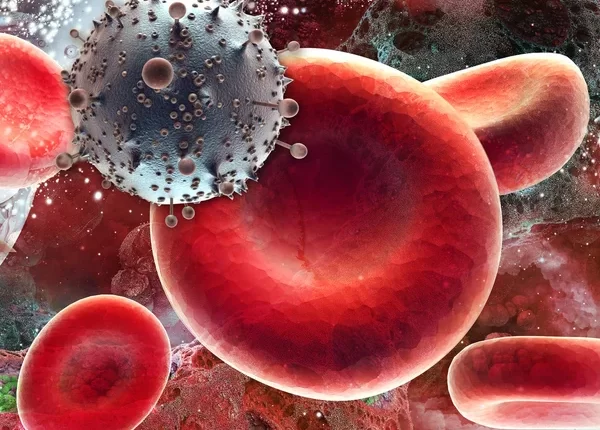Despite decades of research and effective treatments, HIV, the virus behind AIDS, remains incurable. It wreaks havoc by hijacking immune cells and replicating its own genetic material. But to do this, it must first breach the heavily guarded cell nucleus, a fortress protected by a selective gatekeeper called the nuclear pore complex.
For years, scientists wondered how HIV bypasses this crucial defense. Now, a groundbreaking discovery reveals that HIV virus possesses a hidden transport ability. To replicate and spread the infection, the virus must smuggle its genetic material into the cell nucleus and integrate it into a chromosome. HIV is a lentivirus that attacks and gradually destroys the immune system, leaving the host unprotected against infection. Persons who are infected with HIV often die from secondary infections or cancer. AIDS is the final stage of HIV infection.
How does HIV virus replicate and spread the infection?
HIV cannot replicate on its own and needs human cells to multiply. Once HIV particles enter the body, they bind to CD4 cells and fuse with them. The virus then takes control of the cell’s DNA, makes copies of itself inside the cell, and releases more HIV into the blood. This process is called the HIV life cycle, which includes binding, fusion, reverse transcription, integration, replication, assembly, and budding. HIV carries an enzyme called reverse transcriptase, which allows it to move backward from RNA to DNA and insert into the host cell’s DNA so that it can replicate. HIV also hijacks other aspects of the host cell to make new proteins for itself. These proteins and the newly replicated HIV genetic material get reassembled into whole virions, which can infect other cells. HIV can potentially be present in cells for years without producing new virus particles.
Key findings:
1. HIV’s capsid is a molecular transporter: The HIV capsid, its protective shell, has evolved to mimic the surface of an importin, a cellular transporter molecule. This allows the virus to bypass the cell’s nuclear pore security system and smuggle its genetic material directly into the nucleus, a feat no other virus can achieve.
2. This ability grants HIV several advantages: By using its disguised capsid, HIV can: * Protect its genetic material from anti-viral sensors in the cytoplasm. * Bypass the cell’s usual virus-busting mechanisms. * Integrate its genetic material into the host chromosome undisturbed.
3. This discovery opens doors for new therapies: Understanding how the HIV capsid acts as a transporter could lead to the development of novel therapies that target this vulnerability. This could potentially lead to a cure for AIDS.
4. There are still unanswered questions: Researchers are still trying to understand how the capsid sheds its disguise and releases its payload inside the nucleus.
ALSO READ: Medical clowns boost sleep and shorten hospital stays for children – Laughter is the best medicine
Source
- https://www.nature.com/articles/s41586-023-06966-w








